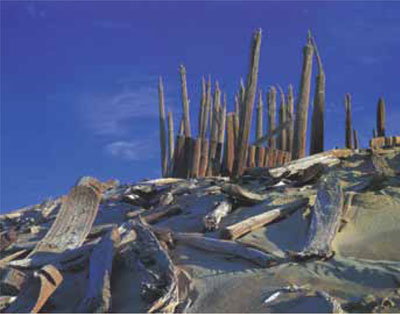
Looking back over the last half-century as archaeology has become more scientific, there have been paradoxically few truly great discoveries. The wonders of archaeology, so it seems, were found by Schliemann at Mycenae and Troy, by Carter with his discovery of Tutankhamun, by Bingham when he ventured high into the Andes to Machu Picchu, and by Maudsley, who effectively tamed the jungle to uncover the Maya. Their stories are told in sepia tone photographs, many of which have become iconic. Yet two great archaeological discoveries dominate the archaeology of our generation: a greater understanding of human evolution from its roots in Africa, and the incomparable wealth of the cemeteries from the Tarim Basin in the Uyghur territory of northwest China. The intellectual fascination of the findings in sub-Saharan Africa and their global significance cannot be denied. But for sheer emotional impact, no recent discoveries match those from northwest China.
The East Central Asian mummies and associated grave goods are remarkable for their preservation and beauty. More than this, though, the Tarim Basin discoveries bring to light evidence of long-term connections between cultures that shaped both the East (as far as Japan) and the West (as far as the Mediterranean). The revelatory finds detail untold tales of intrepid mobility through trading and herding that we would normally associate with modern times. Yet, plainly such mobility had its roots in the earliest nomadic and sedentary groups. Much is made of the ethnic and linguistic issues associated with these discoveries, but the really unexpected finds have been the wealth of clothing and other items of material culture recovered from the Tarim Basin graves. The exhibition Secrets of the Silk Road, then–of the great discoveries made by archaeologists along this ancient tract–will cause us to rethink many of our accepted ways of understanding the roots of our civilizations. It will turn long-held beliefs upside down, and compel us to see interconnections and mobility as axiomatic to a past that greatly helped to shape both the Greco-Roman and Chinese worlds, as well as Gandharan India. We are at the beginning of a new world history, which may explain the incredible fascination with this amazing exhibition.

